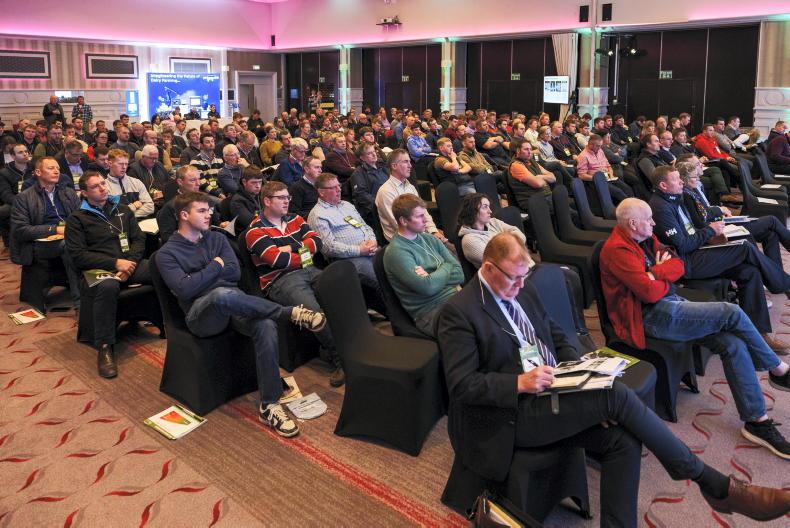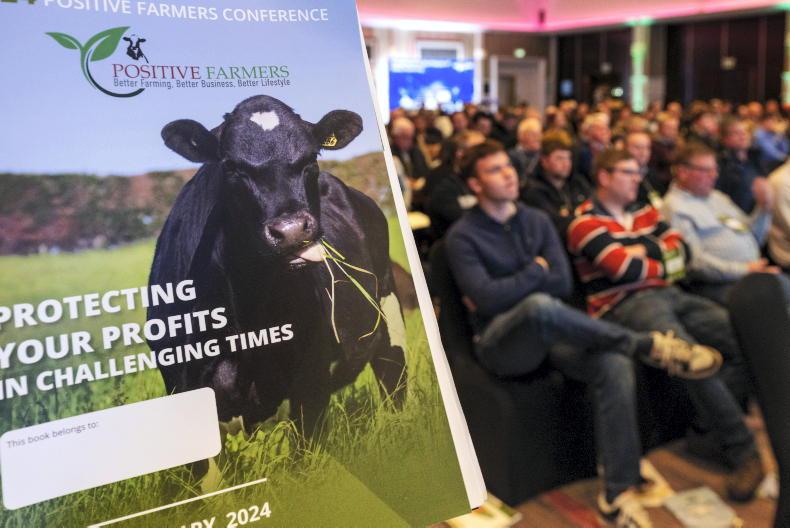Creating and maintaining markets for dairy beef calves from dairy farms has become a progressive challenge in recent years, with the threat of losing live export markets being a big worry.
Speaking at the Positive Farmers Conference, Teagasc's Padraig French posed the question to the audience asking how many farmers now already have a market for their 2024 calves.
One way outlined by French to maintain a strong market for these calves is to produce a high-value beef calf to the beef farmer.
All along, dairy farmers have selected beef bulls predominantly on easy calving and short gestation merits. Dairy farmers must think about producing a quality calf for the beef farmer by including carcase weight and carcase quality when selecting sires.
Factors
Data was taken from 72,375 calf sales in Cork marts in spring 2023 to determine what factors influenced calf price. Alan Twomey in Moorepark conducted the study, looking at factors such as age, weight, breed and timing of sale.
Peak price for calves was seen in late January and declined to the lowest price seen in late March, which correlated in line with calf supply.
Age didn’t have much impact on calf sales, while the weight of the calf at sale had a significant impact on price. The data showed for every kilo more at sale, the calf demanded €5 more selling price.
Breed also had a significant impact, where breeds such as Belgian Blue and Charolais demanded top price at €210, whereas dairy breeds such as Jersey and Friesian averaged at €50 for 55kg calves.
Three pieces of advice given from Padraig French for 2024 was to focus on the health and feeding of calves, using sexed semen to reduce the amount of dairy bulls in the market and focus on carcase weight as well as calving ease when picking beef bulls.






 This is a subscriber-only article
This is a subscriber-only article











SHARING OPTIONS: